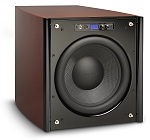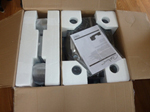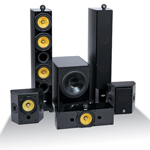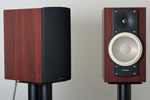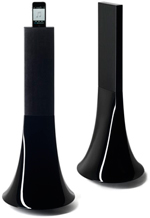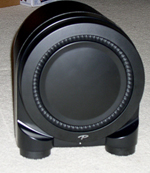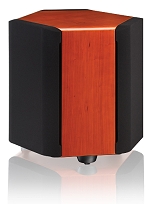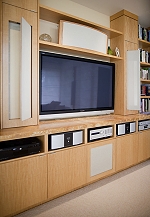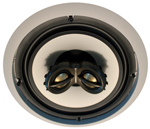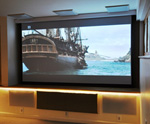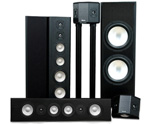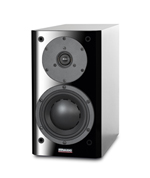Introduction to Speaker Reviews
Speakers, or Loudspeakers, are a most influential component of an audio system. Regardless of advances in digital signal processing and amplification, speakers will always be an inherently analogue, mechanical component. They have the potential to last not years but decades and as such a purchase decision carries more weight than that of other AV components. There is a tremendous array of speaker designs, including acoustic suspension, ported, band pass, transmission line to name but the most common. There is also diverse transducer technology. The vast majority of speakers will include a high frequency driver, called a tweeter, coupled with one or more low frequency drivers, called woofers. On more advanced models a mid-range driver may also be used. The signal sent to the speakers is divided by the crossover, a collection of electrical components which separates the high, middle, and low frequencies and sends them to the respective transducer.
Active (aka self-powered) speakers are speakers with their own integrated amplification. Active speakers have tremendous potential, when designed and executed properly, to achieve pinnacle performance for a variety of reasons. Superior results can be obtained with relatively lower amplification as compared to passive speakers because the power can be used more efficiently. The crossover will almost always come before amplification, feeding multiple amplifier channels, one for each driver within a single speaker (ie the tweeter and woofer each get their own amplifier). Further, because the speaker driver and amp characteristics are known, each can be optimized for the other (contrast this with conventional speakers where each must be designed to work well, but perhaps not ideally, with a myriad possible variations).
Most audiophiles wrongly assume that the amplification inside an active speaker couldn’t possibly be as good as giant, expensive, external boxes so active speakers don’t enjoy as much popularity in the consumer space as they should (subwoofers being the exception), but are by a wide margin the standard in professional mixing and monitoring setups.
Most active speakers will feature one or more line level inputs and at least an amplifier gain control. Better models will include contour controls and other sound tailoring features
Speakers may be designed for general use, or for more specific implementation such as a particular channel in a multi-channel audio system, or a specific frequency range such as a dedicated bass module, known as a sub-woofer.
Our focus when evaluating speakers is on accuracy, both in terms of frequency response and transient response. We use objective measurements when possible, including quasi-anechoic measurements and impedance sweeps, coupling that with subjective “real world” auditioning.



